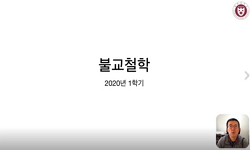Until now, we have examined the ke-Yi understanding of emptiness. In chapter Ⅱ, I described the meaning and historical background of ke-Yi. In chapter Ⅲ. I examined the relation between the concept of nothingness of Lao Zhang (老莊) and the Budd...
http://chineseinput.net/에서 pinyin(병음)방식으로 중국어를 변환할 수 있습니다.
변환된 중국어를 복사하여 사용하시면 됩니다.
- 中文 을 입력하시려면 zhongwen을 입력하시고 space를누르시면됩니다.
- 北京 을 입력하시려면 beijing을 입력하시고 space를 누르시면 됩니다.
空思想의 格義的 理解에 관한 硏究 = (A) Study on the Understanding of the Emptiness(Sunyata) by Ke-Yi construction
한글로보기https://www.riss.kr/link?id=T9948076
- 저자
-
발행사항
서울 : 동국대학교 대학원, 1999
- 학위논문사항
-
발행연도
1999
-
작성언어
한국어
- 주제어
-
KDC
220.1 판사항(4)
-
발행국(도시)
서울
-
형태사항
ⅱ, 73p. ; 26cm.
-
일반주기명
참고문헌: p. 67-71
- 소장기관
-
0
상세조회 -
0
다운로드
부가정보
다국어 초록 (Multilingual Abstract)
Until now, we have examined the ke-Yi understanding of emptiness. In chapter Ⅱ, I described the meaning and historical background of ke-Yi. In chapter Ⅲ. I examined the relation between the concept of nothingness of Lao Zhang (老莊) and the Buddhist concept of emptiness. Chapter Ⅳ examines the ke-Yi understanding in Chaoron (肇論) and the proper meaning of emptiness. I will abridge the content of chapter Ⅱ and instead resume the content of chapters Ⅲ and Ⅳ. The content of chapters Ⅲ is as follows: the Madhyamika-karika evolues logically the meaning of emptiness based on dependent arising. All dharmas are produced as a result of many causes. Hence there is no Self and no real being. Also everything undergoes the change of time and nothing lasts forever, this is "not being-and-not-non-being". But in Lao Zhang, nothingness is the origin of all things, it is an absolute, transcendental, and eternal existence. Therein, being and non-being are not differentiated. This is the major difference between emptiness and nothingness. The similarity between the two is their denial of linguistic characterization, each denomination is only provisional. A further similarity is their undifferentiated balance, in emptiness, the middle Way is realized, whereas Laozi's 反, Zhuangzi's point to the meaning of 天均 and 道樞 , Chapter Ⅳ examines the meaning of nothingness concerning '三家義'. 心無義 is the concretization of all things, 卽色義 the concretization of manifold conditions, 本無義 is an acceptance of absolute nothingness. Sengzhao (僧肇) criticizes such a wrong understanding of emptiness, and do many efforts for the right understanding of emptiness. 心無義 and 卽色義 are criticized as eternal viewing, whereas 本無義 is criticized for being annihilative view. Also, in order to get a genuine understanding of emptiness as the middle Way being neither existence nor inexistence, dependent origination, not-being, not-nonbeing, the two truths, being and non-being are used. Thus, the similarity between emptiness and nothingness served for the ke-Yi understanding of emptiness and was the action that provided its import into China. But the fundamental difference between emptiness and nothingness was recognized as the error of ke-Yi understanding. Thus criticism arose and efforts were made for its proper understanding.
목차 (Table of Contents)
- 목차 = ⅰ
- Ⅰ. 서언 = 1
- 1. 연구목적 = 1
- 2. 연구방법 및 범위 = 2
- Ⅱ. 격의의 의미와 발생배경 = 4
- 목차 = ⅰ
- Ⅰ. 서언 = 1
- 1. 연구목적 = 1
- 2. 연구방법 및 범위 = 2
- Ⅱ. 격의의 의미와 발생배경 = 4
- 1. 격의의 의미 = 4
- 2. 격의적 이해의 역사적 배경 = 7
- 1) 노장사상의 유행 = 7
- 2) 반야경학의 성행 = 9
- 3) 격의불교시대의 도래 = 10
- Ⅲ. 격의적 해석의 사상근거 = 12
- 1. 노장사상에서 無의 의미 = 13
- 1) 혼돈상태의 근원적 시초 = 13
- 2) 언어적 표현의 한계와 가능성 = 22
- 3) 영구불변의 절대성 = 28
- 4) 有에 대한 상대성 = 30
- 5) 무차별의 평등성 = 32
- 2. 불교에서 空의 의미 = 36
- 1) 무자성 = 38
- 2) 假 = 41
- 3) 언어적 방편 = 43
- 4) 분별의 부정 = 44
- 5) 중도 = 45
- 3. 空과 無의 관계 = 47
- 1) 세계관 = 49
- 2) 假의 의미 = 50
- 3) 무차별에 의한 평등의 의미 = 50
- 4) 무자성과 절대성 = 51
- 5) 無常과 常 = 53
- Ⅳ. 『부진공론』에 나타난 空의 격의적 해석과 그 극복 = 54
- 1. 『부진공론』의 격의적 해석을 통해 본 무개념의 영향 = 54
- 1) 心無義 = 55
- 2) 卽色義 = 55
- 3) 本無義 = 56
- 2. 격의적 해석에 대한 비판 = 56
- 3. 空思想의 재정립 = 60
- Ⅴ. 결어 = 64
- 참고문헌 = 67
- ABSTRACT = 72












